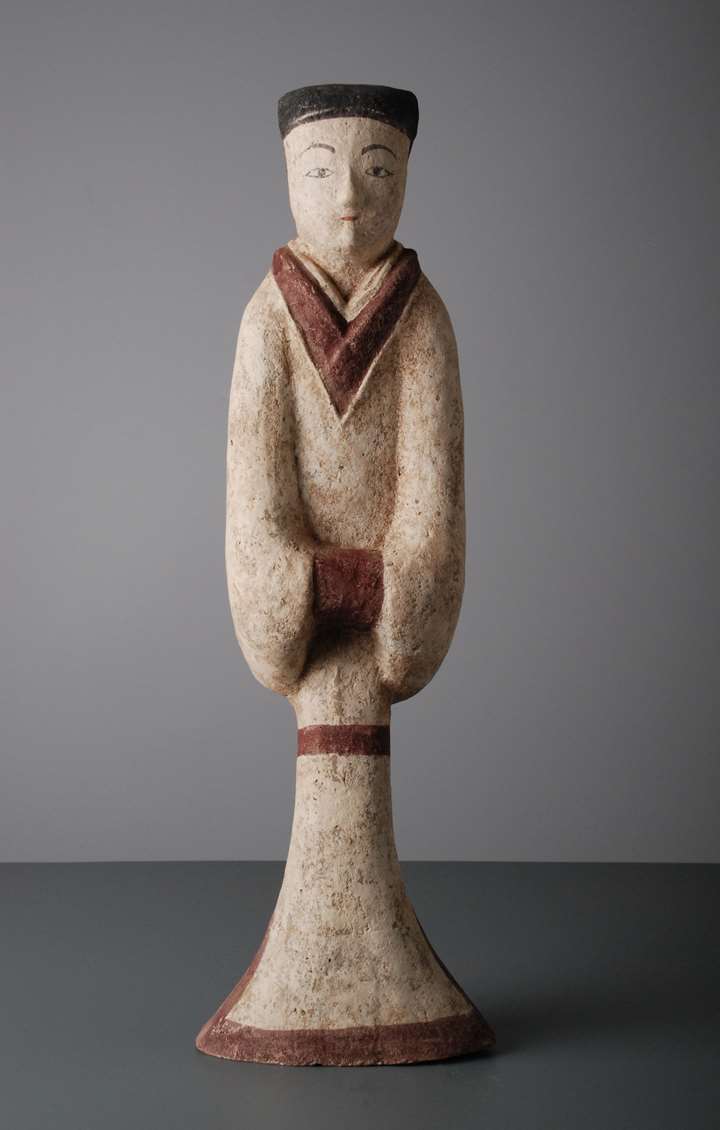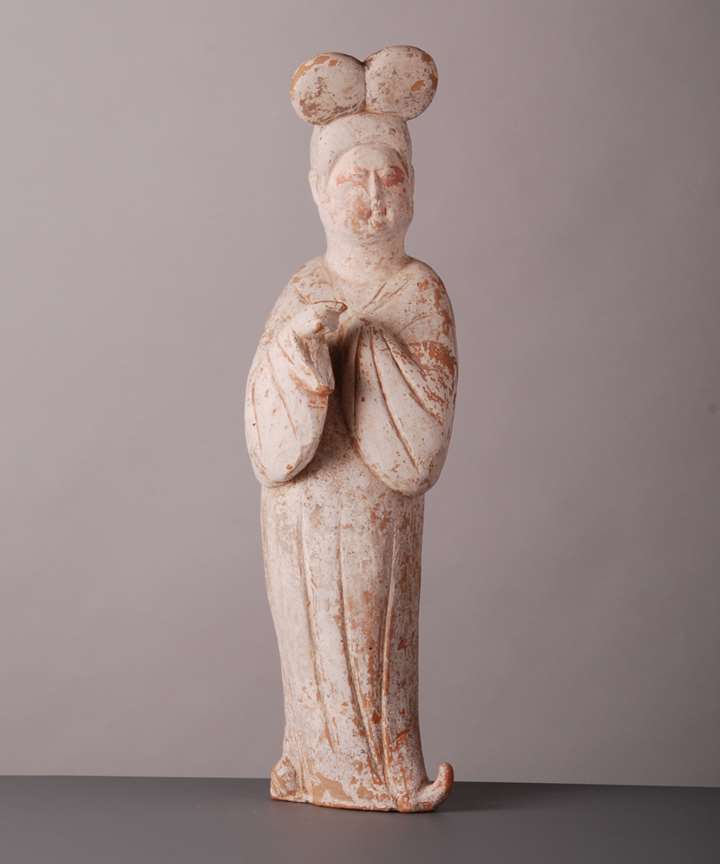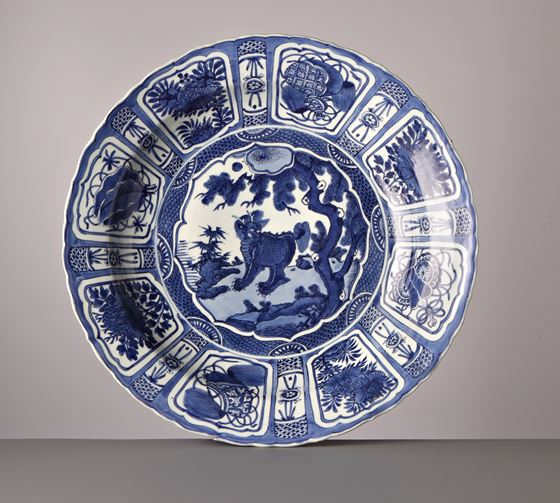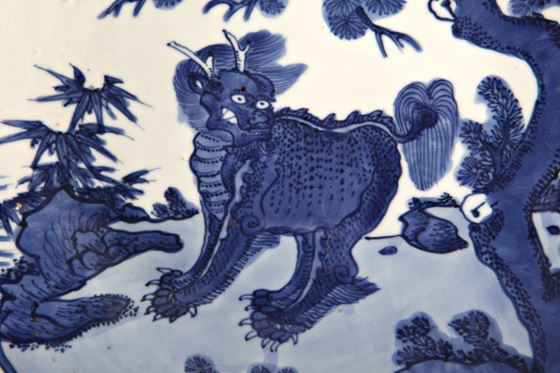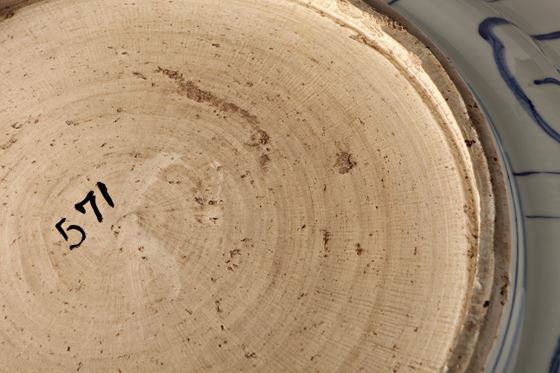Description & Technical information
China, Wanli Period (1573 – 1620)
A large finely painted ‘Kraak’ dish, in two contrasting shades of underglaze blue. It has an unusual main panel decoration with a mythical creature, in a rocky landscape with a large pine tree. The central eight point bracket-lobed medallion, is surrounded by scale diaper pattern, with a half sun motif at each point. The wide flat, slightly scalloped, rim has eight broad panels outlined in blue; each panel decorated with various auspicious symbols and flower sprays. The alternating narrow panels, have a round medallion hanging from ribbons, framed above and below with a scale diaper pattern. The underside of the rim has the same number of alternating panels, but more lightly and loosely drawn. The base and footrim are unglazed, with some course sand from the kiln in places. Large deep dishes, such as this one, are referred to in the VOC records as lampetschotels (water basins). Rinaldi classifies this type of dish as VII.2 and it is similar in design to those salvaged from the Witte Leeuw, a shipwreck which is dated to 1613.
The central panel depicts a baize (白泽)- or Beast of the White Marsh – a white auspicious beast, believed to live in the magical Kunlun Mountains. It had the two-horned head of a dragon and the body of a lion with some scaling on its shoulders and flanks. It was supposedly able to speak the human language and comprehend the nature of all living things. An ancient Chinese legend tells that a baízé was encountered by the ancient emperor Huangdi, whilst travelling in the east. The creature dictated to him a guide to the forms and habits of all 11,520 types of supernatural creatures in the world, and how to overcome their hauntings and attacks. The emperor had this information written down in a book called the Báizé Tú (白泽图). This book no longer exists, but many fragments of it survive in other texts.This beast is often confused with a qilin, which looks very similar. It also has the head of a dragon and hooves, a deer’s body, which is generally scaled all over. The bàizé and qilin look very similar, but can be distinguished by looking at the feet – the first has claws the other hooves.
The Topkapi Saray, Istanbul has a similar dish (nr. TKS 15/3223). Dishes in a similar style, but with a differing main decor, are in the British Museum (nr. OA F.273+), and the Victoria & Albert Museum (nr. 1637-1876), London. Another is in The Rijksmuseum, Amsterdam (inv.nr. AK-NM 13086).
Extra Information
Kraak, is a Western term for the earliest type of export porcelain made for the foreign trade. The term Kraak is thought to have derived from the name for a type of Portuguese ship - caracca - which the Dutch famously looted in 1600. These fully-loaded cargo ships included a great deal of this type of Chinese porcelain. This and the rest of the load of exotic far-eastern goods, were duly auctioned off by the Dutch East India Company (VOC) raising a fortune. From then on, blue and white porcelain became very popular. Not only amongst the well-to-do Dutch burgers and noblemen, but also in the aristocratic and royal households across Europe.
Date: 1610-1620
Period: 1600-1750, 17th century
Origin: China
Medium: porcelain
Dimensions: 50 cm (19⁵/₈ inches)
Provenance: Baron en Baroness van Zuylen collection, Belgium, No. 571.
Categories: Oriental and Asian Art
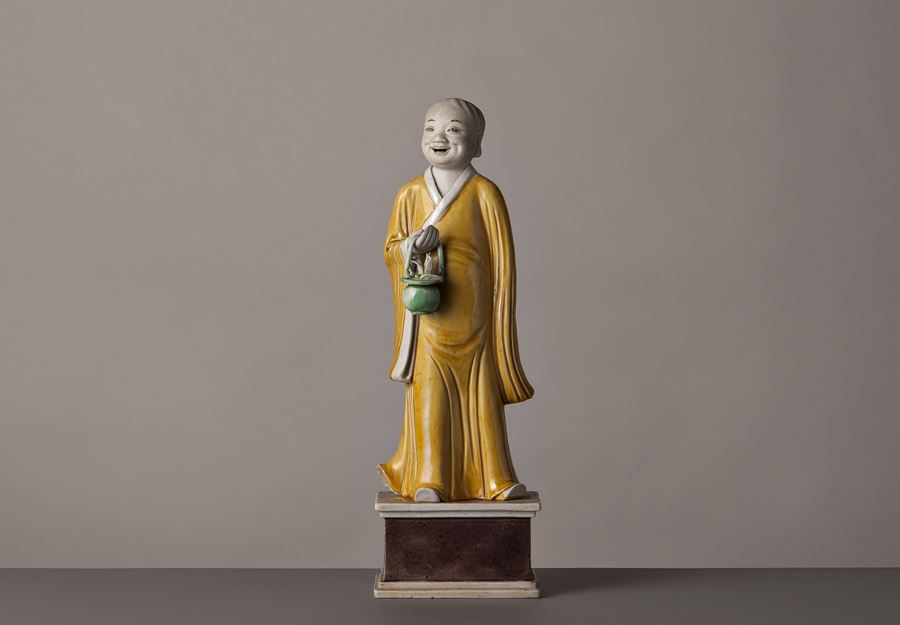
Discover the gallery
Vanderven Oriental Art
Chinese Ceramics and Works of Art
More Works From This Gallery

Vanderven Oriental Art
Rockwork Ornaments: Longevity & Offspring
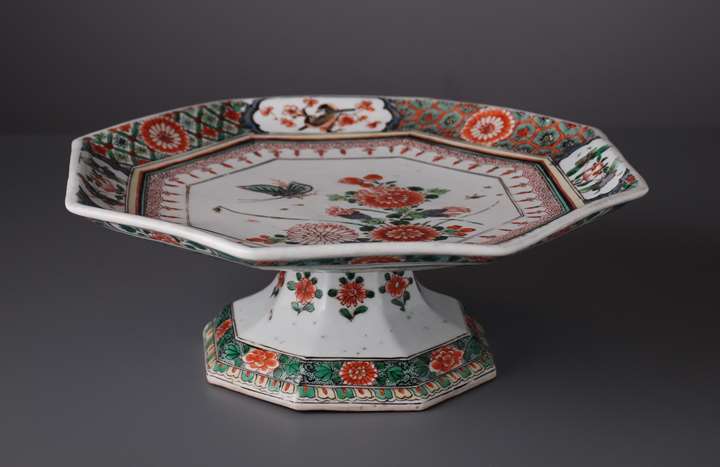
Vanderven Oriental Art

